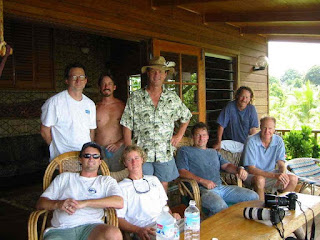The Mystery of JFK and PT109
WHAT REALLY HAPPENED TO PT109
David Ellis
IT’S generally only the more adventurous make it to remote Gizo in the Solomon Islands, a magical place of some of the world’s best fishing and wreck and reef diving, and from where you can venture a further 10kms to a miniscule dot shown on most charts as Kasolo Atoll.
For this sandy speck Kasolo is better known to the world as Kennedy Island – the place where a-then 26 years old John F. Kennedy, commander of the US Navy’s motor torpedo boat PT109 and future President of the United States, together with ten of his crew, waded ashore in pitch-blackness after their boat was rammed and sunk by the Japanese destroyer Amagiri on an August night in 1943.
Sixty-two years later the Australian expedition cruise ship Orion became one of a growing number of boutique and smaller cruise ships vessels to visit Kasolo as part of Pacific Island cruises, giving its just-100 passengers the opportunity to walk on that very beach on which Kennedy and his men came ashore.
For decades South Pacific adventurers have laid claim to finding and even salvaging the remains of PT109. But their assertions are in fact their imaginings: what’s left of PT109 lays a virtually impossible-to-reach 374 metres below the surface 4km off Kasolo.
PT109 had been one of fifteen PTs sent from the US Navy’s base on Rendova Island to harass a Japanese convoy that had dropped thousands of troops on nearby Kolombangara Island, as Japan planned to attack Guadalcanal, and ultimately Australia during the Pacific War.
But in the inkiness of the night, the Amagiri rammed the little 25-metre PT109, splitting her lengthwise, her fuel tanks erupting in a massive fireball.
Two men went down with PT109 and after clinging for a time to the upturned boat, Commander Kennedy and ten others swam and drifted to Kasolo – which locally means Gods of Paradise, and which most certainly must have seemed Paradise to the shipwrecked sailors.
And extraordinarily, Kennedy had towed one of the more-badly injured the entire 4km by the strap of the seaman’s life-vest clenched in his mouth.
Realising the minute atoll offered little safety, the group next day swam two kilometres to Olasana Island, from where Kennedy and crewman George Ross swam another kilometre to larger Nauru Island in the hope of finding American troops. But they were surprised to be confronted by two villagers, who said they were working secretly behind the 12,000-strong Japanese enemy lines with the extraordinarily brave Australian Coastwatcher, George Evans.
Kennedy needed to get a message to his base on Rendova, now 60kms away, and one of the villagers, Biuku Gasa came up with an ingenious idea: he gathered a green coconut and showed Kennedy how to scratch a message into its surface with a piece of sharpened sea-shell.
Kennedy engraved: NAURU ISL / COMMANDER / NATIVE KNOWS POS’IT / HE CAN PILOT / 11 ALIVE / NEED SMALL BOAT / KENNEDY
Gasa and his mate Aaron (Eroni) Kumana then paddled their canoe 60km to Rendova with the bizarre coconut message, and under cover of the next night’s darkness another PT rescued Kennedy and his crew.
American dive-holiday operator, Danny Kennedy (no relation to JFK) has lived at Gizo for a-near 30 years and was part of the team led by Dr Robert Ballard (who’d earlier found the remains of the Titanic,) that finally found the few remains of PT109 in 2002.
Danny told me when I visited him in Gizo aboard Orion that despite all the claims by others, all that was sighted by Ballard’s ROV (Remotely Operated Vehicle) was a brass torpedo tube in 374-metres of water, and possibly a torpedo. Being of timber construction all else had succumbed to the sea, or disappeared under sand and coral debris; the ROV nudged the torpedo tube but was unable to move it, suggesting it was still attached in some way to PT109.
Ballard and Kennedy will not reveal the exact location of PT109 saying they respect it as a war grave – and in any case, it’s way too deep to dive.
Orion will re-visit Kennedy Island in March 2014 as part of a 21-night cruise to PNG, Vanuatu and the Solomons; details travel agents. For information about Gizo diving, fishing, WWII wreckage tours see www.divegizo.com
………………
PHOTO CAPTIONS:
[] COMMANDER – later President – John F Kennedy (extreme right) and crew of PT109. (US Navy Archives)
[] AMERICAN Robert Ballard (straw hat) with his Institute for Exploration team, and Gizo Dive owner Danny Kennedy (standing right,) after finding what little was left of PT109. (Gizo Dive)
[] CANOE similar to the one Biuka Gasa and Aaron Kumana paddled 60km to get help for the stranded crew of PT109. (Gizo Dive)
[] MINISCULE Kennedy Island on which JFK and crew were washed up after their boat sank. (Wikimedia.com)
[] AUSTRALIAN expedition cruise ship Orion – one of a small number of boutique vessels able to visit Kennedy Island. (Orion Expedition Cruises.)







You must be logged in to post a comment Login